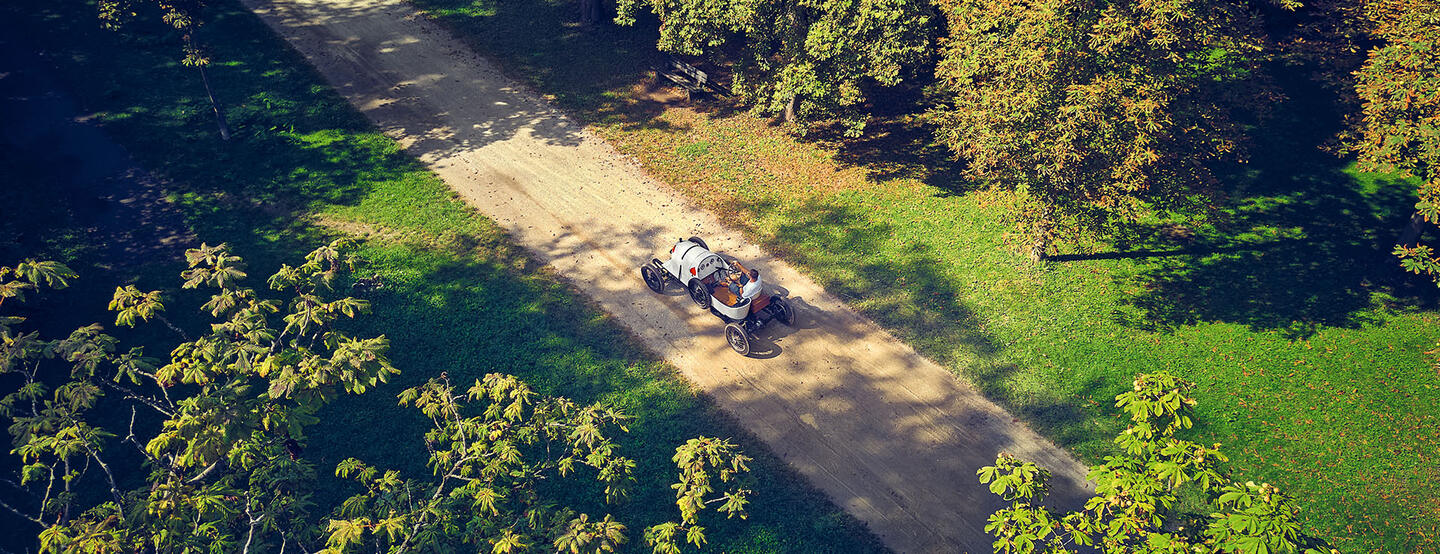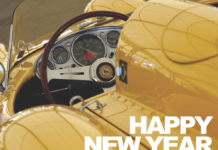Back to the roots: more than a hundred years ago, Ferdinand Porsche designed an extraordinary race car, the Austro-Daimler ADS-R, in Wiener Neustadt, Austria. Today, we bring the former Targa Florio class champion, whose nickname is Sascha, back home.

Following a vigorous turn of the crank, the gas pedal is applied ever so gently, producing the sound that everyone’s been waiting for. Passersby reach for their smartphones, cafe owners step out onto their terraces, and curious faces appear in the windows of the old, historical buildings. Everyone knows that’s not the roar of an everyday car. And they’re right! The powerful litany of sounds stems from the water-cooled 1.1-liter four-cylinder engine of an Austro-Daimler ADS-R, a race car designed by Ferdinand Porsche more than a hundred years ago. It’s currently the oldest drivable model at the Porsche Museum – and the man at the crank is Jan Heidak, vehicle service attendant and the youngest employee at the museum workshop. He and his boss Kuno Werner spent months working on the antique car to get it up and running again. Today they’re bringing it back home to its place of birth in Wiener Neustadt, Austria – at the request of “Christophorus”.
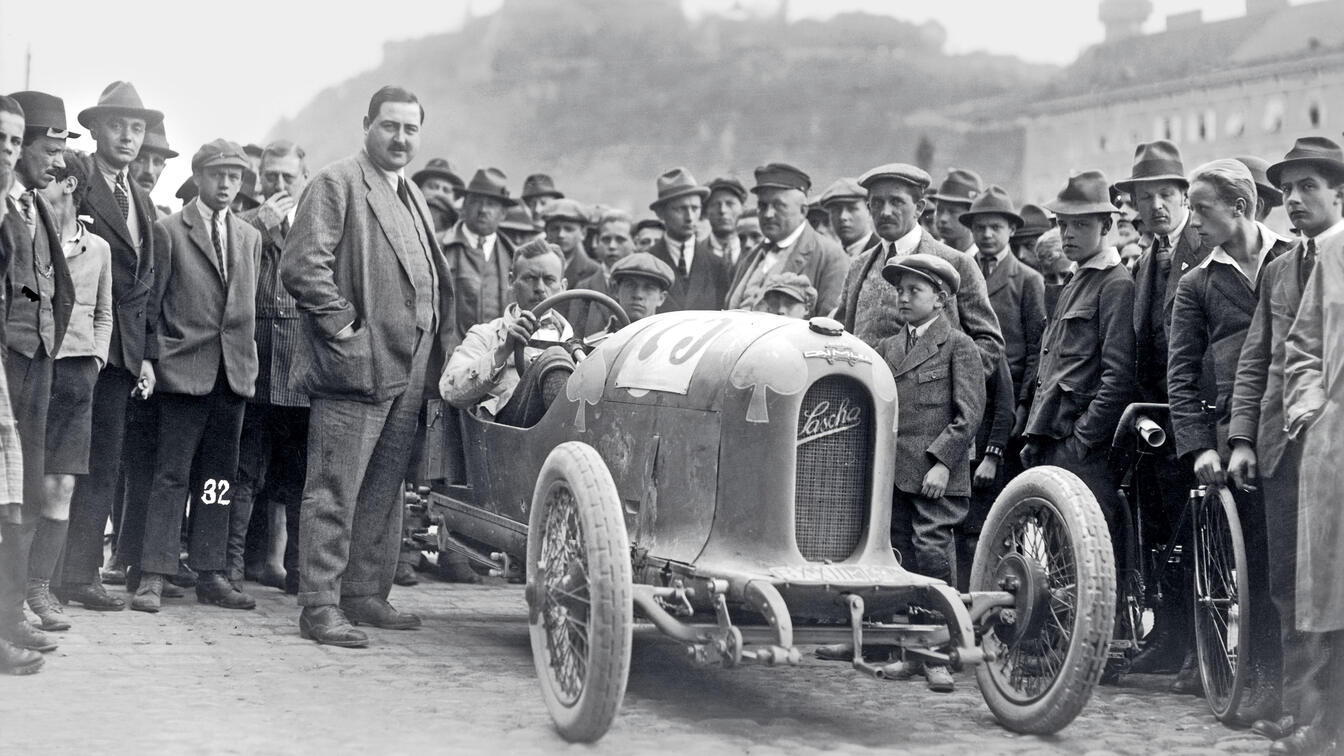
Sascha and its creators
One of the four Sascha prototypes at the Riesrennen race in Graz, Austria, in 1922. To the left of the car is Alexander Graf Kolowrat, to the right a young Ferry Porsche, and behind him his father, Ferdinand.
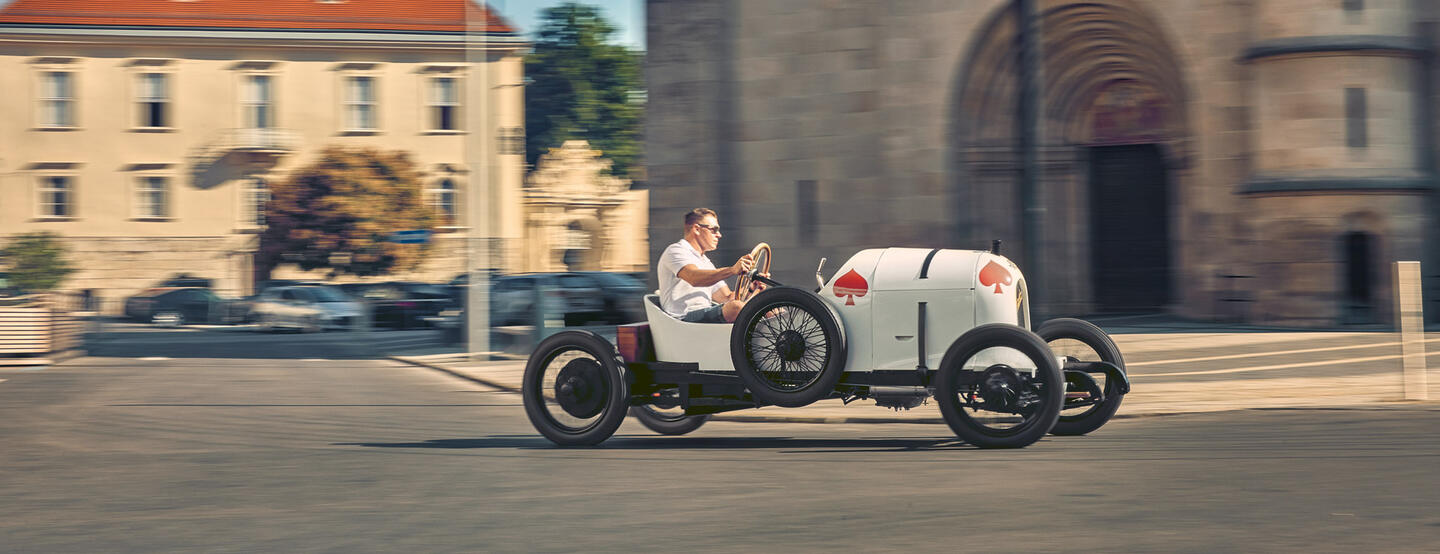
Journey through time
Jan Heidak, vehicle service attendant at the Porsche Museum workshop, drives “Sascha” around Wiener Neustadt Cathedral in 2023.
The visionary’s dream
Ferdinand Porsche began working on his groundbreaking idea in 1920. At that time, 45-year-old Porsche was Managing Director of automobile manufacturer Austro-Daimler in Wiener Neustadt, about 60 kilometers south of Vienna. His vision was to develop a small, lightweight, and affordable car for the people and produce it in large quantities. Porsche, who was already a well-known designer even then, was therefore decades ahead of mass motorization. He found an ally in Alexander Joseph Graf Kolowrat-Krakowsky, who went by the name Sascha. Kolowrat was not only a co-owner of Austro-Daimler, but also a movie producer and avid motorsport fan. The planned series production car required approval from the Austro-Daimler Executive Board, which was skeptical about the project. Porsche was certain that all it would take to win over the critics was positive attention following a race. So in addition to the originally planned small car with a displacement of just 1,100 cc, he also designed a racing version, the ADS-R. Because Kolowrat financed the project, the vehicle was named Sascha after him. The result was a lightweight, 598-kilogram race car, a milestone on the path to the planned four-seater series. Four prototypes celebrated their premiere in 1922 at Targa Florio, the daring road race through the Sicilian Madonie mountains. The vehicles weren’t finished until just before the race. Porsche employees painted the four aluminum bodies red during the train journey to ensure they wouldn’t stand out and get stolen in Italy. To make them easier to identify from afar, Kolowrat applied playing card symbols to the bodies.
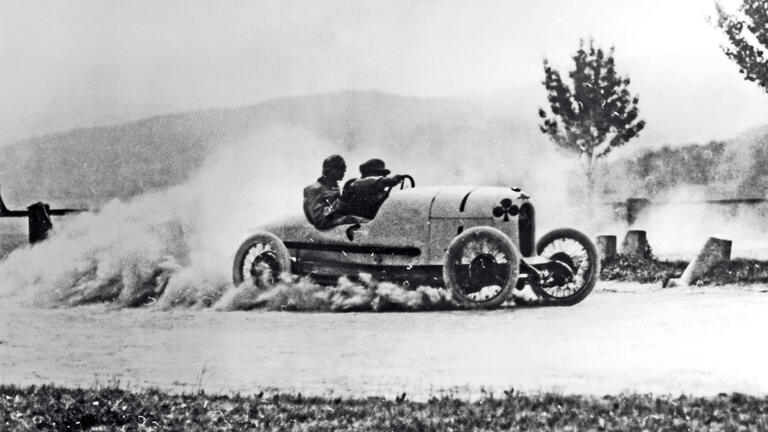
A drive on gravel
During the training for the Riederberg race in Lower Austria, Graf Kolowrat drove one of the four prototypes himself.
Of the three that competed in the 1.1‑liter class, one, driven by Kolowrat himself, had to drop out due to engine issues and the other two both secured a 1-2 victory in the class. Equipped with a 1.5-liter engine, the fourth Sascha race car went up against the competition in the stronger, open class and, after 432 kilometers, 6,000 turns, and gradients of up to 12.5 percent, secured 19th place in the overall ranking – with a top speed of 144 kmh. The Italian press hailed the ADS-R as “the revelation of the Targa Florio.” Most impressively, Sascha competed against vehicles with engines that were up to five times more powerful – and its average speed was ultimately just 8 kmh less. The Austro-Daimler Executive Board also took notice of what happened, yet refrained from taking action. So Sascha continued to compete, winning another 22 out of 52 races. And still, the ExecutiveBoard eventually rejected series production for financial reasons and due to inflation, stating that Austria was too small to offer a suitable market. So all that remained was the few prototypes of the ADS-R and Ferdinand Porsche’s idea of a lightweight, affordable car, which he would continue to pursue undeterred.

Premiere in Sicily
The Austro-Daimler ADS-R at Targa Florio in 1922. Lambert Pocher is seated in the car with starting number 3, behind which Ferdinand Porsche is visible wearing a peaked cap.
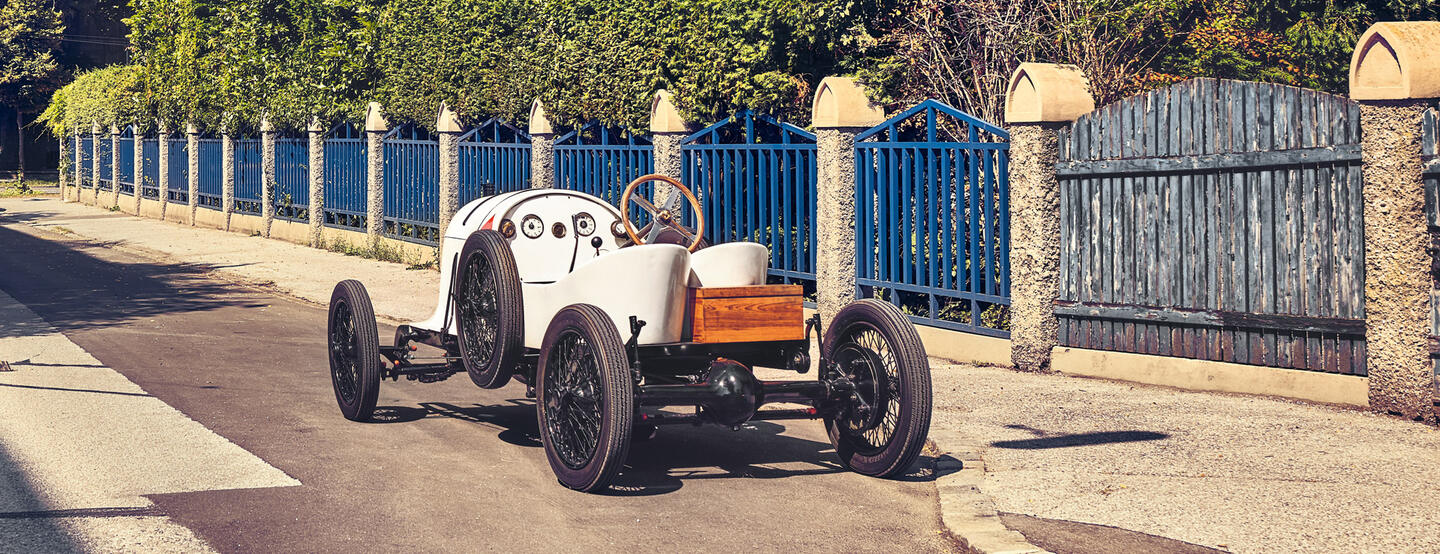
More than a hundred years later, Sascha still cuts a fine figure with the wooden toolbox at the rear here in Wiener Neustadt.
Finally home
Back to Wiener Neustadt in 2023. Many buildings on the sun-filled Herrengasse are protected as historical monuments, some of which go back to the Middle Ages. Jan Heidak applies the gas pedal and – after more than a hundred years – Sascha’s wheels begin to turn again. It cruises the streets of the old town, circles the late-Romanesque cathedral, and rolls through the gate of the 13th-century Reckturm tower. This is roughly what it must have looked like when the people of Wiener Neustadt had the pleasure of seeing it drive by all those years ago. While many of the Porsche monuments such as the Austro-Daimler factory halls are no longer there, streets like Ferdinand-Porsche-Ring pay tribute to the historical heritage.
Today, Heidak is the only one who knows how it feels to drive the race car. “Sascha was built for other road surfaces. We actually have too much grip, are too fast, and have high forces,” he explains during a break. “But it’s still a lot of fun. You can feel every vibration. Hear how the engine’s performing. There’s no power steering, so you need a lot of strength and sensitivity.” Goggles are also a definite must as the front wheels throw up dust off the road. But Heidak enjoys all of that. “And it’s an absolute honor to drive through this scenery.”
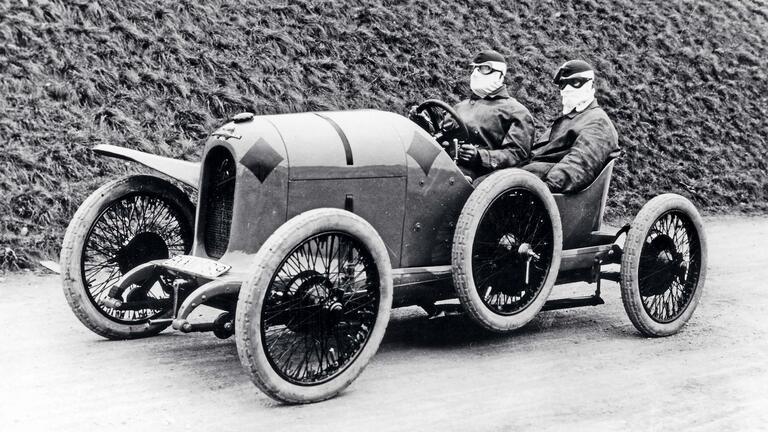
Pit lane
Alfred Neubauer and mechanic Georg Auer raced Sascha on the Austro‑Daimler test track in 1922.
Learning from Ferdinand Porsche
He then hops back into the race car. There’s no seat belt, no lights. There’s an emergency seat for the mechanic next to the driver’s seat, which was common in race cars at that time. The pedals are also unusual: the clutch is on the left, the brake on the right, and the gas in the middle. “We didn’t realize just how much there was to understand about Sascha until we got started on the project,” explains Workshop Manager Kuno Werner. “When we were working on the powertrain, we had to think like the designers did back then.” There are more than 700 historical vehicles at the Porsche Museum, but very few from this period. “Drum brakes with cable pulls, for example, are very unusual today,” explains Werner. “For the engine, we enlisted the help of an expert in prewar engines.” A few special tools had to be produced before restoration could even begin, at which time the experts recognized the first DNA characteristics of today’s Porsche. “Lightweight aluminum design, the low center of gravity,” says Werner. “Those are a common thread throughout the history of our sports car.” Aluminum was even more expensive back then than it is today. Still, Ferdinand Porsche made the decision to use it to boost performance, which is also inextricably linked to the Porsche name today.

Jan Heidak and Kuno Werner
get the in-line four-cylinder engine up and running again.
Rebirth is the only beginning
Jan Heidak follows in Graf Kolowrat’s footsteps, seen here in the Wiener Neustadt Academy Park.
